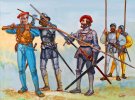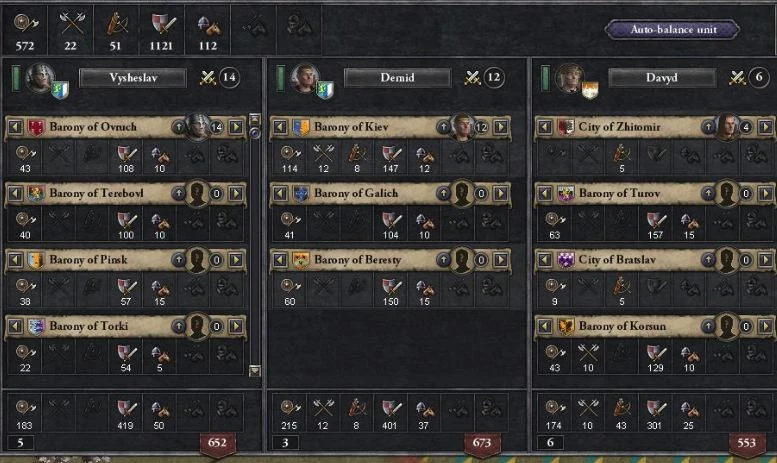Cont. after having slept on it.
If going with the 'combination of buildings' option, here is how I would have it roughly work:
Archery grounds = Archers
Archery grounds + blacksmith = Crossbowmen
Barracks = Pikemen
Barracks + blacksmith = Heavy infantry
-> OR Just blacksmith = Heavy infantry
Stables = Light horsemen
Stables + blacksmith = Heavy horsemen
Stables + archery grounds = Horse archers
Remaining levies = Skirmishers
Cultural troops could be handled the way CK2 did it: via cultural buildings.
Considering the average/'default' amount of building slots in CK3 is 4, this would mean that you'd need at most 2 slots for the stronger troops like heavy cavalry and crossbowmen, making them a slightly bigger investment. But, this also means you 'progress' towards them. You would first build and upgrade stables, netting you light cavalry, until you're rich enough to upgrade to heavy cavalry. This means you won't have to 'backtrack' your buildings when you can finally afford more expensive units. A slight balance problem is heavy infantry vs pikemen; and I'm not sure whether heavy infantry should be necessary better -- and thus more expensive than -- or on roughly the same ground as pikemen, with whichever is stronger depending on the situation. This issue kind of stems from the fact that there's no difference between a well-equipped pikeman and a 'less-equipped' pikeman, while 'heavy infantry' is obviously always well-equipped.
Aren't well-equipped pikemen technically heavy intrantry though?
View attachment 1336439
The economy buildings providing the levies is also a really good idea. I was at first wondering how levies would be provided but yeah, economy buildings seems like the most obvious choice. But I wouldn't call levies in this system 'manpower', since it's not exactly that. Manpower in EU4 acts as a sort of 'pool' solely for recruiting and replenishing troops, that is theoretically infinite, although there is a manpower cap; here the amount of troops you can have is dependent on the force limit, though you can exceed it. I think levies should act more like a force limit than as manpower, limiting how much you can recruit, but being replenished during war as they are now. A fully adequate manpower system would, I truly believe, require a population system, however rudimentary. I doubt Paradox would implement a population system a la Sinews of War.
As for horse-manpower, I think this would be a bit too much, and just having stables convert levies into cavalry would be adequate enough -- and realistic for the CK3 team to add.



